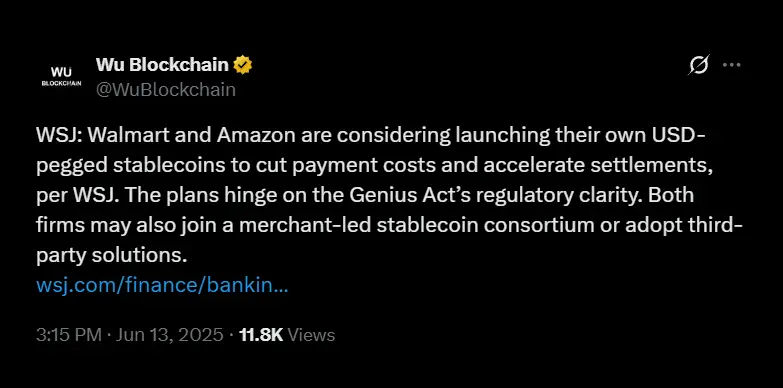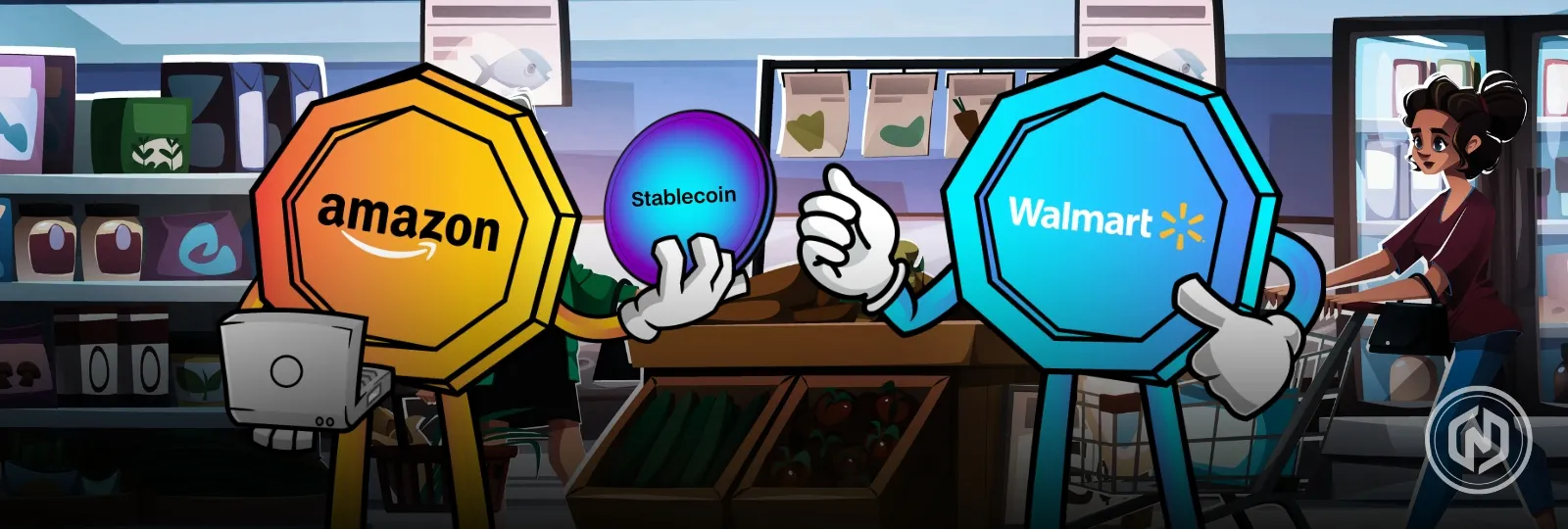Walmart and Amazon, two of the biggest retail market places, are planning to make a move in the stablecoin sector. As per a Wall Street Journal report, both of these companies plan on launching their own stablecoins to reduce payment processing fees and transaction settling time.

Benefits of Stablecoins
Currently, both companies pay billions each year in interchange fees to credit card giants like Visa and Mastercard. By rolling out their own digital dollars, stablecoins pegged 1:1 with the U.S. dollar and backed by cash or U.S. Treasuries – they are looking to sidestep traditional banks and card networks. This could lead to faster, cheaper transactions, especially for cross-border payments where inefficiencies are even more pronounced.
Regulatory Landscape
If there is regulatory clarity, then these initiatives can be successful. The proposed GENIUS Act, is currently advancing through the U.S. Senate should provide a set of clear guidelines for the issuance and usage of the stablecoins soon. According to this Act, the legislation mandates full reserve backing, regular audits, and strict compliance with anti-money laundering (AML) and sanctions regulations.
Also, it is important to know that the Act also limits the direct involvement of large technology firms in issuing stablecoins, which could affect and influence how Walmart and Amazon proceed.
Amazon and Walmart Explore Options
Both of these companies are currently exploring various options to navigate through these regulatory requirements. The options include that these companies could launch their own stablecoins, could bring up a merchant-led stablecoin consortium, or adopt third-party stablecoin solutions. In a consortium approach, multiple retailers come together and collaborate under a shared issuer. This could help distribute the costs and risks, while boosting industry wide adoption.
Potential Impact
If these retail giants launch their stablecoins and if these stablecoins are widely adopted, banks could face reduced fee income from card processing and slower growth in traditional deposit accounts, as more funds might flow into the stablecoin ecosystem. However, there have also been talks about several U.S. banks reportedly developing their own stablecoins to stay in the competition.
Challenges and Concerns
There are always two sides to a coin. As there are good sides to the launch of these stablecoins, on the other hand there are concerns. These concerns include security concerns, regulatory scrutiny, and consumer acceptance that must be addressed before stablecoins become mainstream in retail payments.
However, industry experts are optimistic. They believe that with appropriate regulatory frameworks in place, stablecoins could lead to lower costs, speed up settlements, and bring in competition in the payments ecosystem.
As the GENIUS Act moves closer to becoming law, the retail and financial sectors are closely watching Walmart and Amazon’s next steps. Their potential entry into the stablecoin sector could be a new era of digital payments in the United States.
Also Read: Anthony Pompliano Eyes CEO Role at ProCapBTC in $750M BTC Deal



